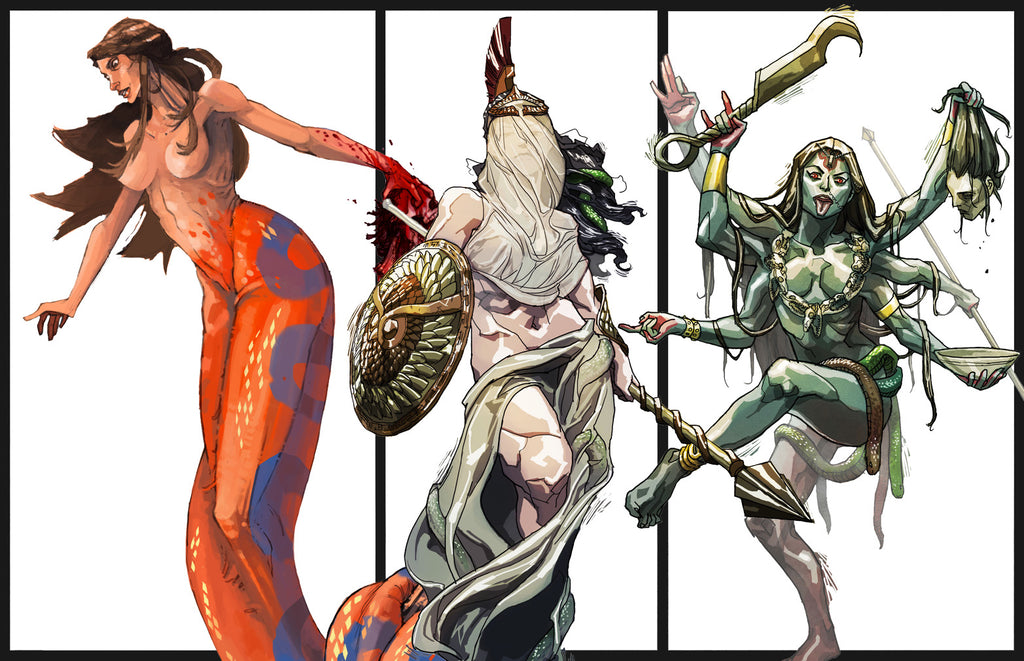Tactics Spotlight: Gorgons August 26, 2015 23:41
We’ve talked a lot about Medusa lately; we’ve given you some insight into the character design and the design of the rules for the individual model, but we haven’t yet touched on one of the most important things about her: her context as the capstone release to our first minor ludus (and don’t worry, next week we’ll start spreading the spotlight out a bit more).
One of the best things about designing the Medusa was getting to design her rules side by side with the other Gorgons. Euryale was the anchor for the design – as one of our Kickstarter models she came first and gave us the foundation to work with. With a name meaning ‘far-strider’ we knew she would be the queen of mobility. Stheno, ‘the forceful,’ was the most difficult to manage rules for. Making sure she was upholding her name and was still reasonably balanced was quite a trick, especially since Euryale was already capable of quite a bit of mayhem on her own. Medusa really gave us the flexibility to round out the set, and provide a little of structure and tactical depth for the trio.
Because we intended the set to be played with only three specific models, the tactics available to the Gorgons could be a bit wilder. Without having to balance the possibilities of things like an entire cohort with swift or room for future releases to fill different roles, the Gorgons can really take the gloves off when taken together as a minor ludus. All of the abilities that we thought were tons of fun but ruled out for balance reasons were suddenly back on the table as potential tactics, and it was a blast to design and test.
The first thing that sets the Gorgons apart in gameplay terms is that every model in the cohort is staged. This makes fatigue management and the clear turn particularly interesting mechanics for them – with fewer models in the cohort, every action and reaction really counts. If a Gorgon player is really pushing the envelope it’s possible to get to a clear turn very rapidly. This allows them not only to recover from exhaustion swiftly, but also gives them the ability to exploit their tactics with very little warning. Slither and Slayer are a solid one-two punch to dish out some hurt even during one of those rapid-fire clear turns, and Petrify can be used either to really punish that same target and go for a knockout, or to push the opponent closer to a clear turn in order to get some breathing room back for the Gorgons.
The downside, of course, is that having fewer activations can make it difficult to respond to a canny opponent. A Gorgon cohort that lets their opponent dictate the tempo of the game is in deep trouble. While each of the sisters is dangerous in her own way, once one of them goes down for the count the other two become much more manageable. Poise helps keep them from becoming as vulnerable while transitioning stages, but Gorgon players should still be wary of losing a stage at the wrong moment. Losing Cold-blooded or Taunt, or becoming Planted can each pose major challenges in the wrong situations.
Of course, one other side benefit of having fewer models in your cohort is being able to spend more time painting each of of these models.
As always, I hope you enjoyed the read. That wraps it up for the Gorgons for now (though of course we'll come back to Stheno and Euryale individually later on). Next time we'll be taking a break from the snakes and going a bit bigger with our first Tactics spotlight for a major Ludus. Until then!



